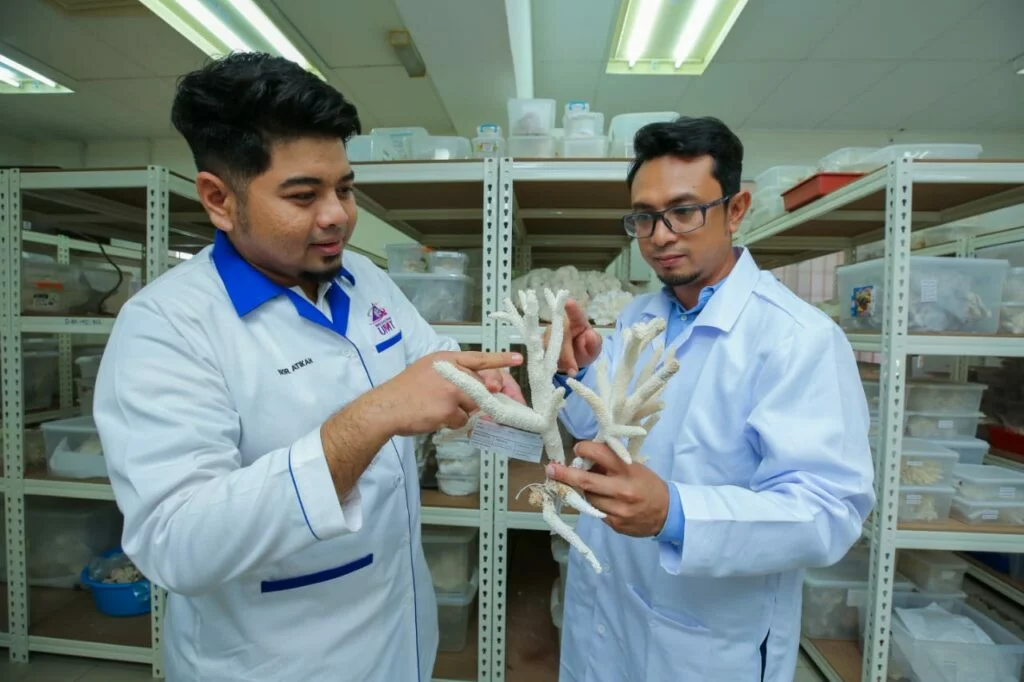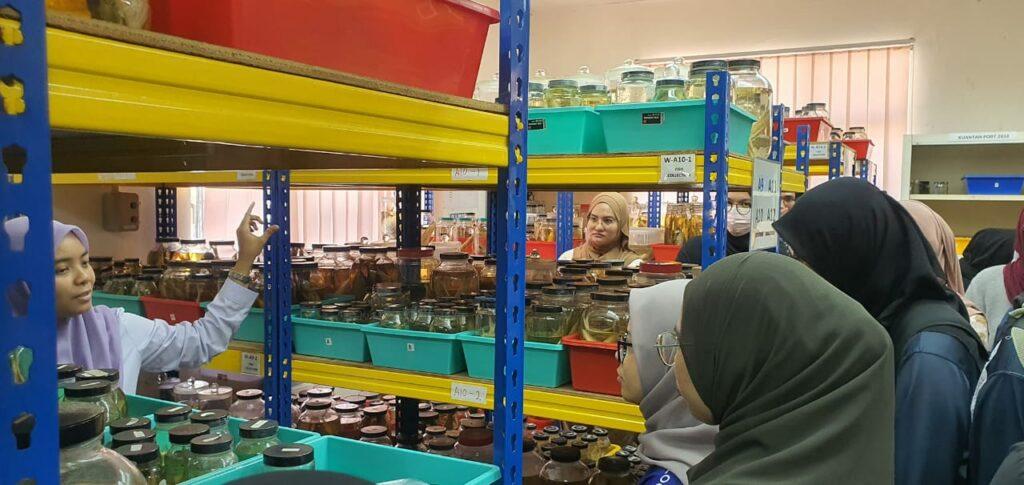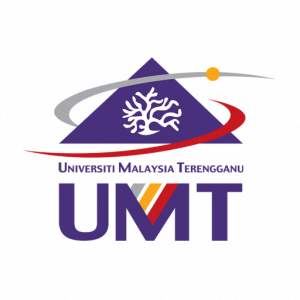Community programme helps develop quality students
Tuesday, 27/06/2023
Universities are important institutions that are responsible for producing graduates that are excellent and physically and spiritually balanced.
In line with the government’s aspiration, the educational mission has been set to be “Upholding a quality education system that develops individuals to their full potential and fulfils the aspirations of the nation.” This can be achieved by developing a quality, world-class educational system that can enhance individuals’ full potential and thereby fulfil the country’s needs.
Various challenges will be faced in the process of achieving the educational strategies. Support and encouragement are needed from all fronts, including the leaders and the community. One of the main challenges the country has to overcome at present is to build a Malaysian society that is knowledgeable to face global competition and technological advancement, as well as caring towards the environment.
Therefore, it is important to effectively build a generation that is skilful and excellent in various fields and competitive so that the country’s aspiration of becoming a developed country on its own terms can be achieved. This is possible when society is filled with first-class minds that are produced through quality education.
As a public university that focuses on the aspect of environmental conservation, Universiti Malaysia Terengganu (UMT) always implements initiatives that help produce students who are excellent and close to the community.
“Students need to be exposed to community-based programmes. These build students’ personalities and instil a responsible attitude towards society, and these will be beneficial for them after their graduation,” said project leader Dr Siti Aisyah Saat, who is also a lecturer at the Faculty of Business, Economy, and Social Development (FPEPS), UMT.
The programme known as Environmental Awareness with Community Programme managed to draw the interest of 120 UMT students who became volunteers and carried out the environmental awareness campaign among Teluk Ketapang community in Kuala Nerus.
According to Dr Siti Aisyah, lecturers need to play a role in helping improve students’ capabilities and instilling in them a first-class mind that is equipped with soft skills and superior personalities so that they can face future challenges.
“We want students that society can accept and appreciate everyone in the community. In addition, students are agents that disseminate environmental conservation campaigns in hope that society becomes more aware of the effects of negligence of their responsibility.”
A host of activities were also held during the programme, such as recyclable item collection, electronic and electrical item collection (e-waste), used cooking oil collection, and a briefing on environmental issues.
“Efforts to properly mould people are not easy and the results are not immediate. A long time is needed, and the process must be planned collectively. This generation is the one that will go out to society, become skilled workers, and subsequently contribute towards the country’s progress,” she said.
UMT, first established as Fisheries Centre in 1979 and has gone through a series of evolutions, has made a name for itself at various levels through academic achievements, research and innovation, and student development.
Among the university’s achievements and recognitions are favourable rankings in Times Higher Education (World University Rankings), Times Higher Education (Impact Rankings), Times Higher Education (World University Rankings by Subject), QS World University Rankings, QS University Rankings (Asia), UI GreenMetric, MyMoheS, Malaysia Research Assessment (MyRA), and SETARA.
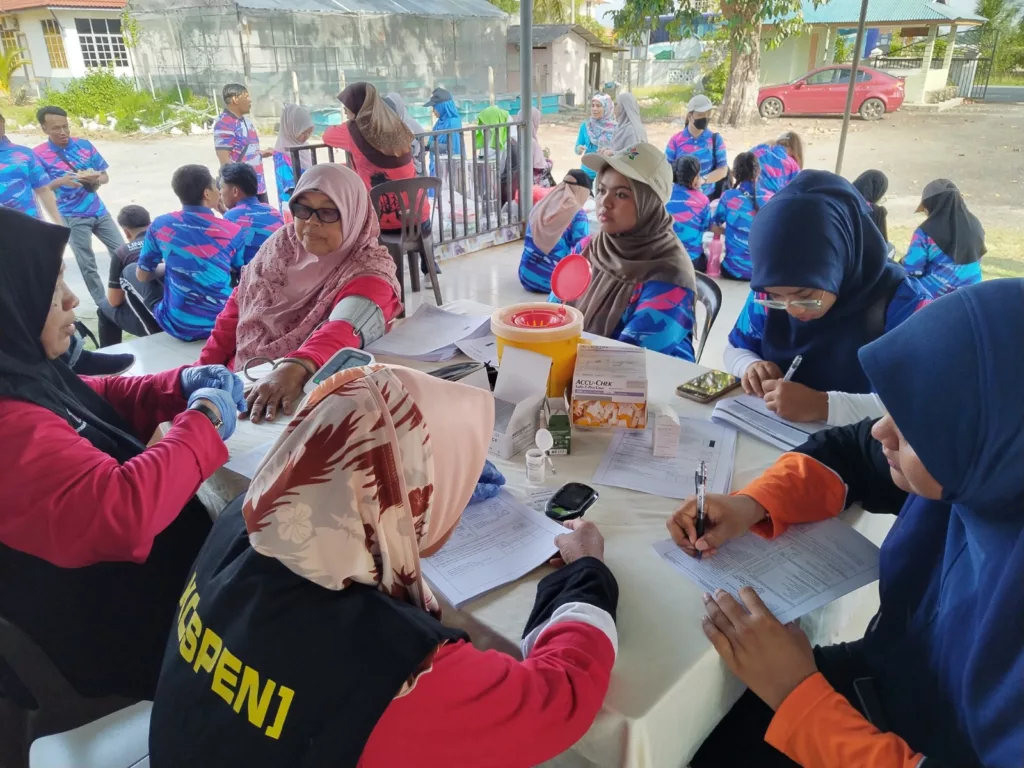
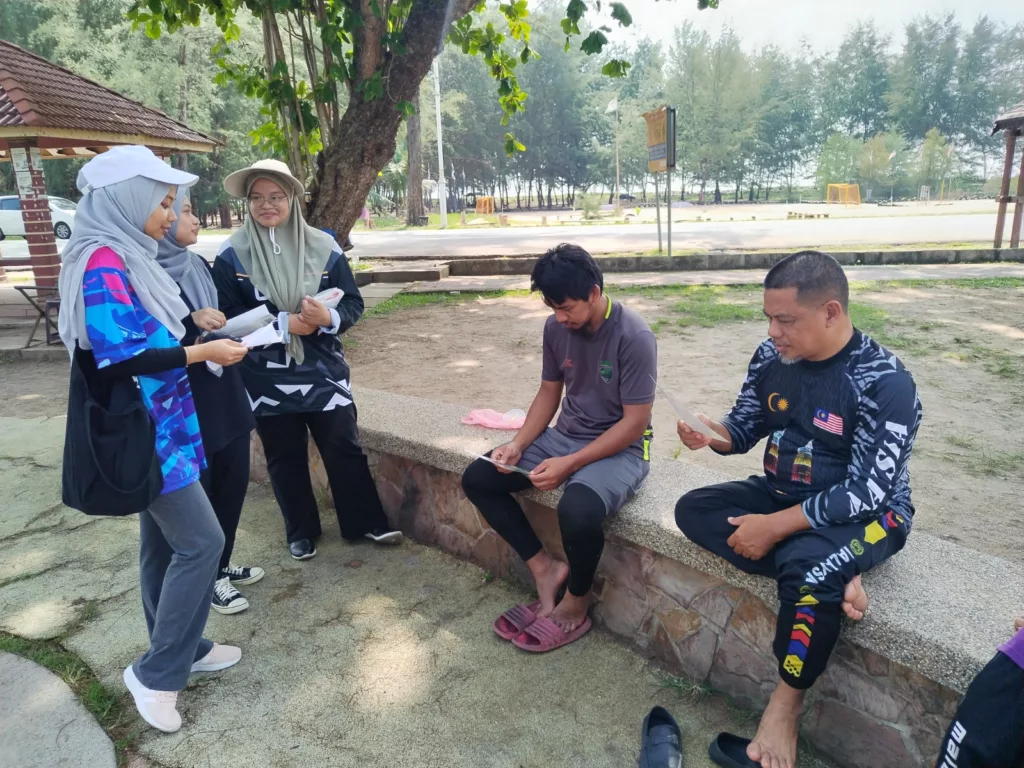
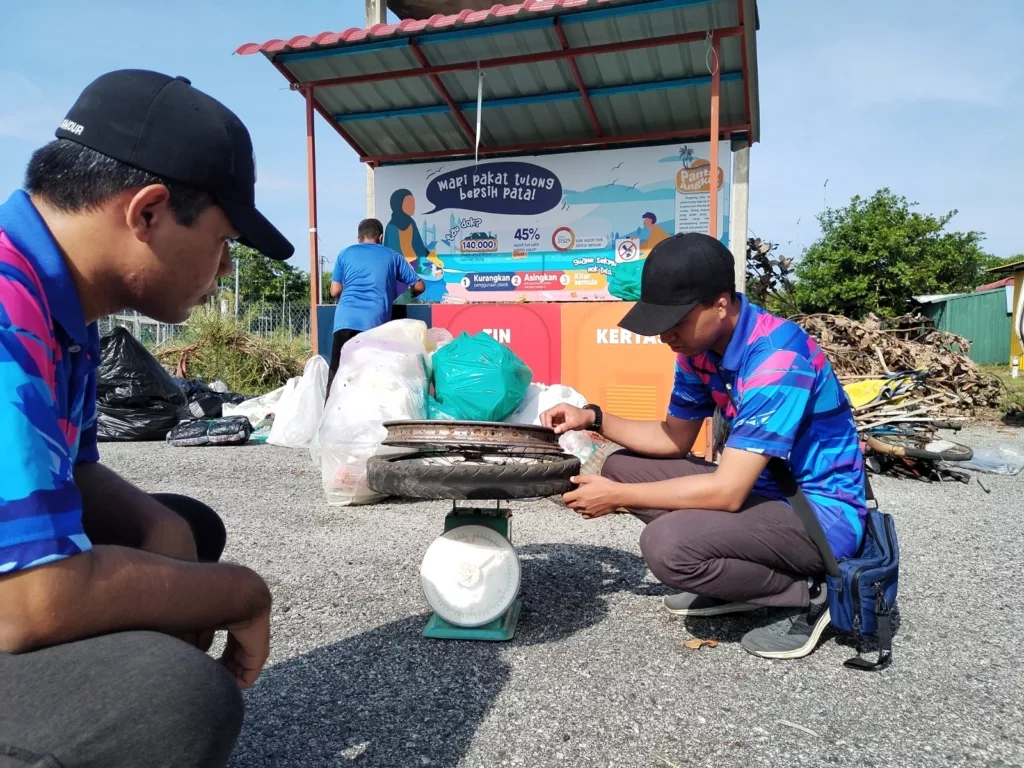
UMT educates society on horseshoe crabs in conjunction with World Horseshoe Crab Day
Sunday, 18/06/2023
Horseshoe crabs are prehistoric or fossil animals that have existed sine 200 million years ago and have kept breeding till today. There are only four species in the world, which are Limulus Polyphemus (L.p) Tachypleus Tridentatus (T.t), Tachypleus Gigas (T.g), and Carcinorcorpius Rotundicauda (C.r). The L.p. species are can only be found in North America. The other three,T.t,, T.g, and C.r, can be found in Malaysia. T.g.and C.r. can be spotted in Kuala Kemaman, Terengganu.
A team of horseshoe crab researchers from Universiti Malaysia Terengganu (UMT) have taken several initiatives to protect these animals that are facing extinction, and some have been carried out on a large scale involving all segments of society.
One initiative is the programme called Let’s Release Horseshoe Crab Babies held every year on 20 June in conjunction with the celebration of World Horseshoe Crab Day on the same date. The yearly observance has been set by the International Union for Conservation of Nature (IUCN) whose members include Malaysia, Japan, United States of America, Indonesia, and India among others.
According to the project leader Prof. Dr. Noraznawati Ismail, the event is one of the activities for UMT Horseshoe Crab Translational Project for 2021/2022 representing the third milestone (M3 – spawning, hatching, and juvenile horseshoe crab release) and the fourth milestone (M4 – producing 10 horseshoe crab guides from among the local community for horseshoe crab CBT in Kemaman).
“We released 1,469 horseshoe crab seeds in Kemaman waters as part of the effort to ensure the species will not be extinct.
“We also aim to produce horseshoe crab guides, so we provide exposure about the animals to the community and school students.
The programme drew about 150 volunteers from different agencies including Kemaman Education Department, Terengganu Tourism Office, and Association of Terengganu Tour Guides.
As per Prof. Noraznawati, the programme also serves a tourist’s attraction. UMT and the state government are working together to introduce horseshoe crabs as one of the new products for Community-based Tourism (CBT) in Kemaman and make UMT Horseshoe Crab Hatchery in Kuala Kemaman as the seventh CBT location in Kemaman.
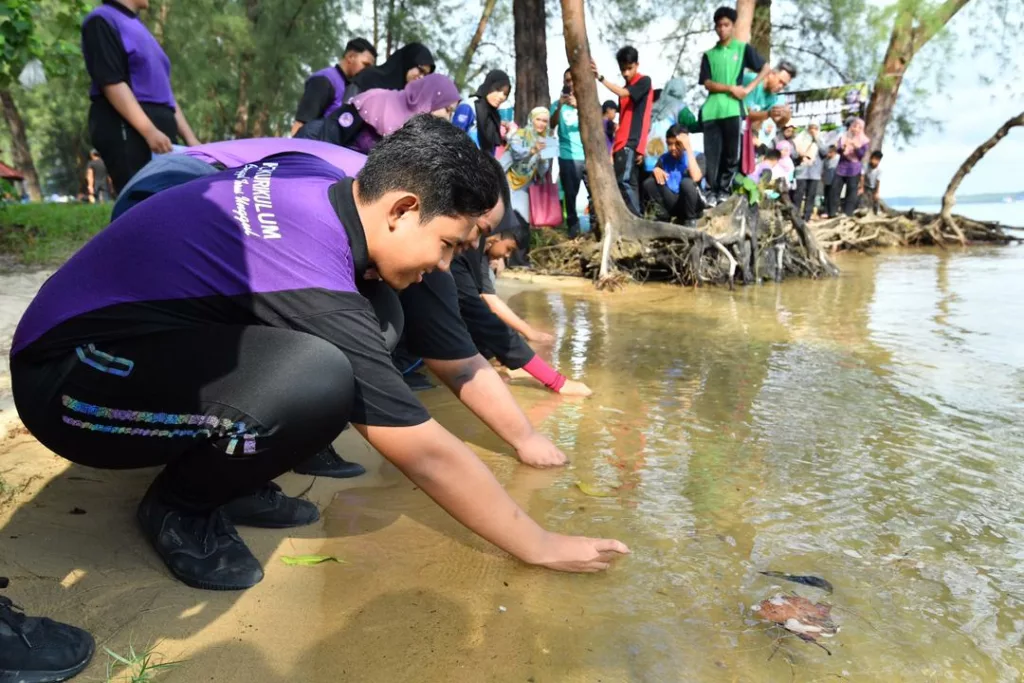
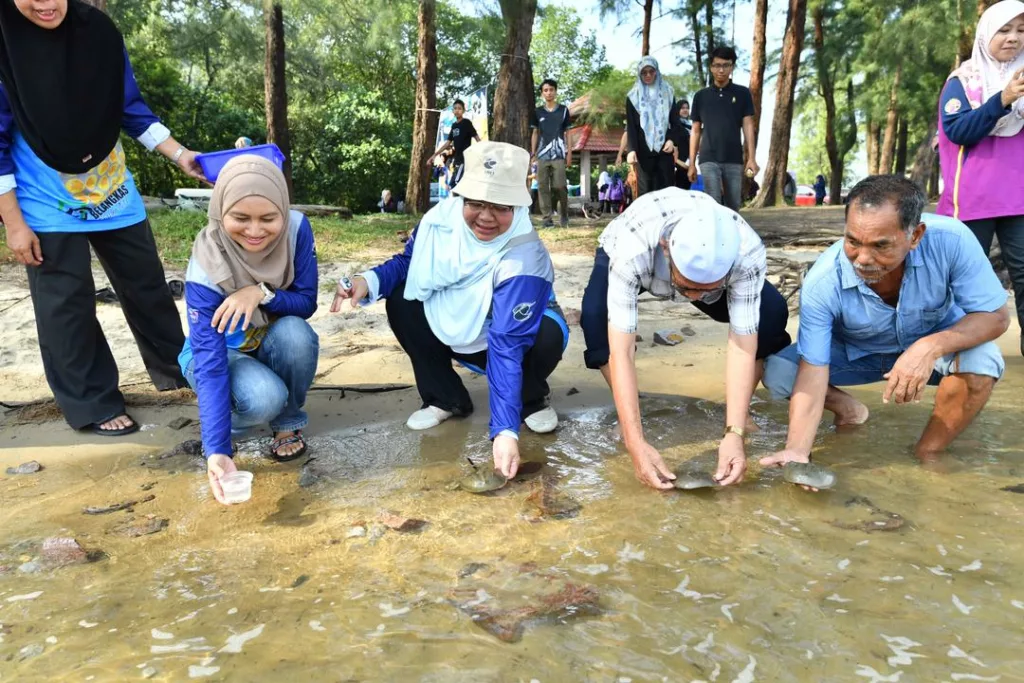
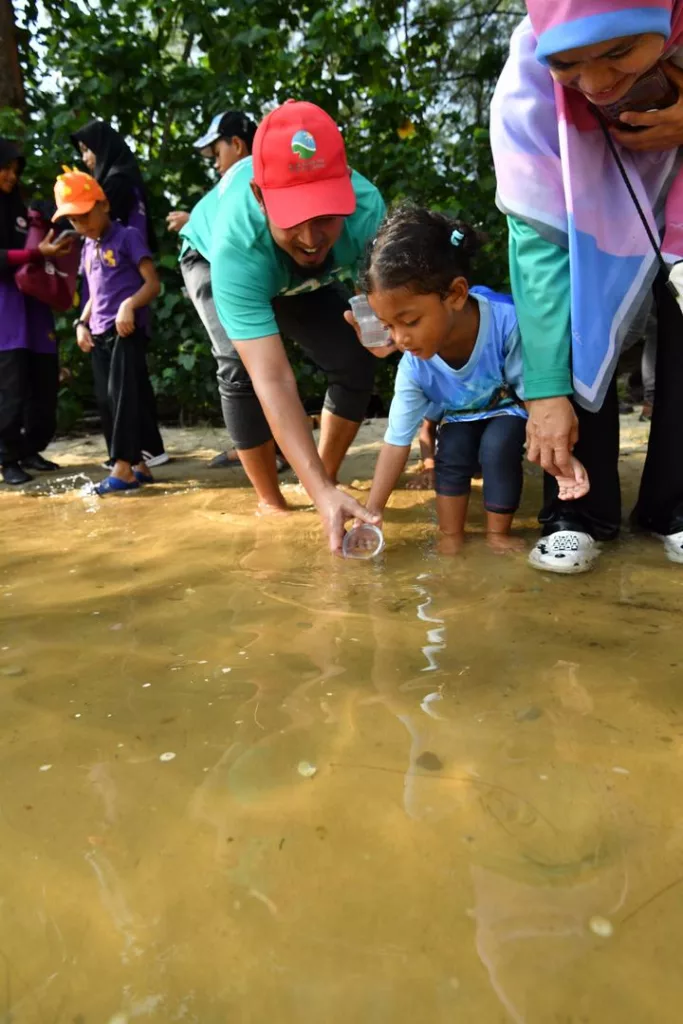
Scotter beam launching ceremony in UMT by Professor Dato' Dr. Mazlan bin Abd Ghaffar, Vice Chancellor UMT
27-9-23
In a bid to promote car-free journeys in the campus, Beam Mobility has partnered with Universiti Malaysia Terengganu to make Beam’s e-scooters available for use across the campus. By placing e-scooters several key locations within campus, students can ride anywhere safely in minutes without having to rely on a car or seek parking spaces. In addition, the rate is about RM0.60 per minute and it is a more cost-effective transport for students in the short and long term. The target of this programme is to reduce the consumption of space taken up by cars by having more e-scooters on the ground. Furthermore, e-scooters allows the universiti to tackle the issue of limited car-park spaces within the campus.
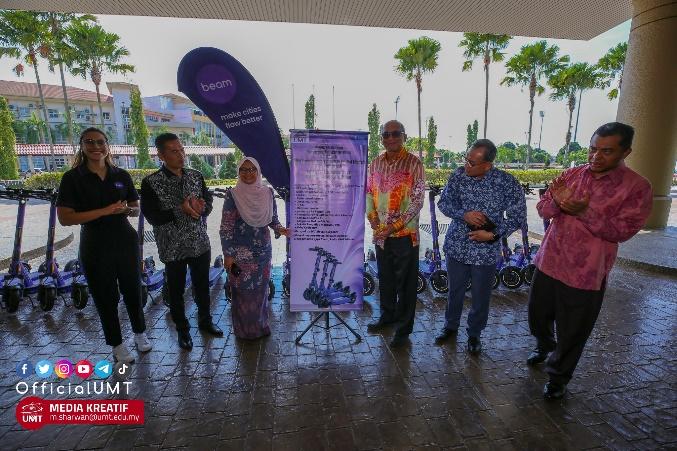
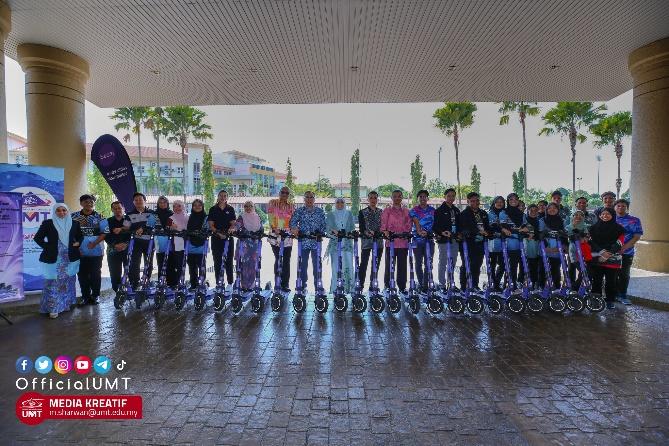
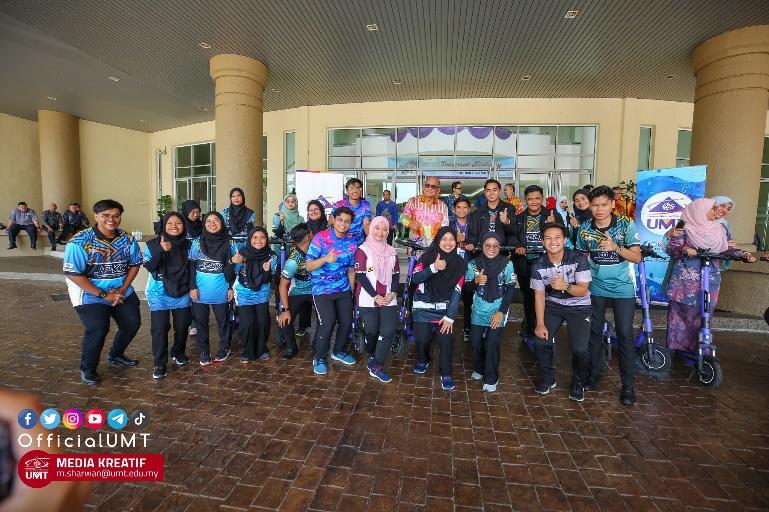
Technological Advancement and Legislation as Keys to Enhanced Maritime Archaeology Explorations
Tuesday, 31/1/2023
Maritime archaeology is a systematic study of any forms of cultural and environmental remains underwater to reconstruct the past, with one of its main focus being shipwrecks.
Generally, there is not much difference between underwater archaeology and land archaeology, except in terms of the environment and equipment. To date, Malaysia has taken the measures to protect, preserve, and manage historical shipwrecks along the country’s waters.
However, without comprehensive laws being applied to the international waters, the historical heritage cannot be protected. Malaysia has ratified the National Heritage Act 2005 to protect underwater cultural heritage.
Each discovery is placed at a selected museum or higher education institution. For example, on 16 August 1606, there was a battle at Cape Rachado, now known as Tanjung Tuan. The battle between the Portuguese and the Dutch had caused the Nassau ship to sink at Port Dickson’s waters. The ship was built in 1602 and belonged to the Dutch East India Company.
Among the historical objects found on the ship were 15 cannons, cannon balls, steel and bronze rifles, two steel anchors, lead bullets, ceramics from Europe, a barrel made from animal bones, shillings, pottery from China, and a glass bottle with “Van Hovoken and Co Rotterdam” written on it. These historical objects are displayed at Muzium Lukut in Port Dickson, Negeri Sembilan.
Objects found on a shipwreck on the waters of Bidong Island are placed at Universiti Malaysia Terengganu (UMT). The ship, better known as The Bidong Wreck, sank at U 5°37.546´T 103°2.514´ coordinate. It is still being studied by researchers at UMT in collaboration with the National Heritage Department.
One of the challenges in maritime archaeology is that the scientific excavation is time consuming and costly. As a result, the scope of the effort is limited to recovery of treasures, while other remains are left behind or destroyed.
At the international level, there have been many innovations in maritime archaeology. Modern technology has finally enabled the field to expand. Equipment using the latest technology has helped maritime archaeology experts to explore the deep sea for shipwreck remains.
In Malaysia, aspects concerning maritime archaeology, whether the technology, legislation, or expertise, have not been fully developed. Among the suggestions for improvement are sending local experts overseas so they can learn more about maritime archaeology from renowned professionals and renewing the diplomatic networking with other countries so that new technology can be incorporated into maritime archaeology studies in Malaysia.
In addition, Malaysia must take proactive measures to become a member in various international conventions related to preservation of maritime heritage in order to improve the current legislation.
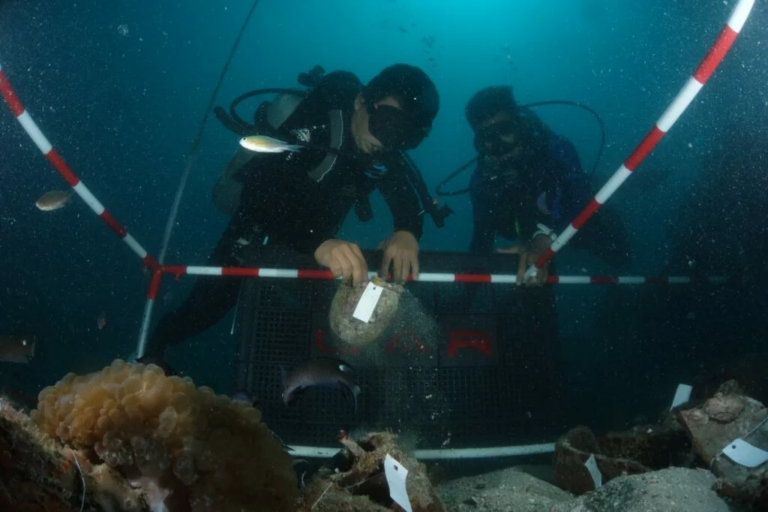
UMT, community replant threatened species, Eye of the Crocodile (Bruguiera hainesii)
Thursday, 25/07/2023
A total of 200 young trees from the species Bruguiera hainesii, or Eye of the Crocodile, have been replanted at Setiu Wetlands in an effort to conserve the declining trees for environmental sustainability.
The Eye of the Crocodile is one of the mangrove trees listed as extremely threatened species.
The effort will help to increase the quantity of the mangrove trees and contribute towards the conservation of the ecosystem of the mangroves that function as habitats for flora and faunas. They serve as barricades that protect coastlines from erosion caused by strong waves.
Project leader Prof. Dr. Shamsul Bahri Abdul Razak said the programme not only focuses on mangrove tree planting but also provides a platform for Universiti Malaysia Terengganu (UMT) to educate the society on the awareness of the importance of conserving the environment.
“There are only about 200 of these species of mangrove tree recorded.
“Mangrove conservation is important because the area is a natural protection against coastline erosion.
Dr. Shamsul, also a stingless bee expert, said the tree seeds were obtained from UMT Community Scientist Tengku Azam Tg Mat, more popularly known as Ayah Ku, who regularly collects the seeds along the coastlines.
“Our society is alert towards the ecosystem and thank you to Ayah Ku for his effort in planting the tree seeds that may have been brought to the coastline during flood.
He said the project also drew the attention of the local community and involvement of 70 school students who have been given the exposure on the importance of the environmental maintenance and mangrove conservation.
“The two schools were S.K. Kuala Setiu and SMK Chalok. The programme was sponsored by BeeSure Sdn. Bhd, which has been helping the UMT stingless bee SIG for the past six years in training the local community to rear stingless bees for income generation.
He added the programme that aims to create awareness of the importance of environmental conservation was held in connection with another earlier programme, Love the Stingless Bees, Love the Environment, held last year at Kg. Pengkalan Gelap, Setiu.
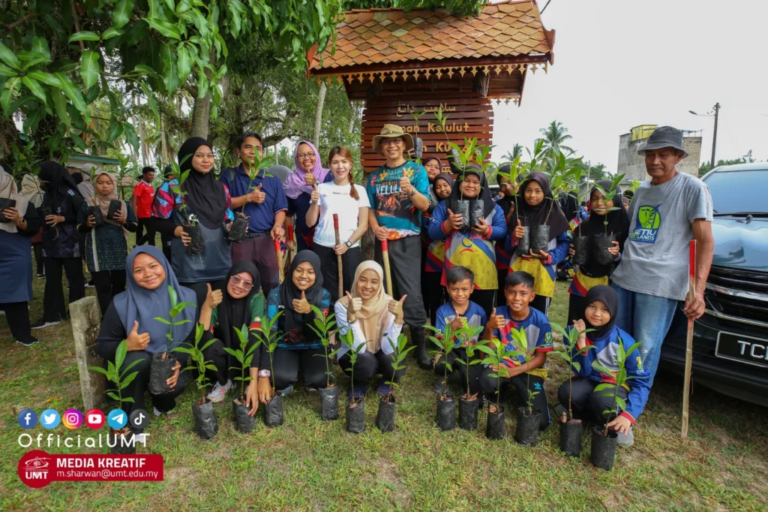
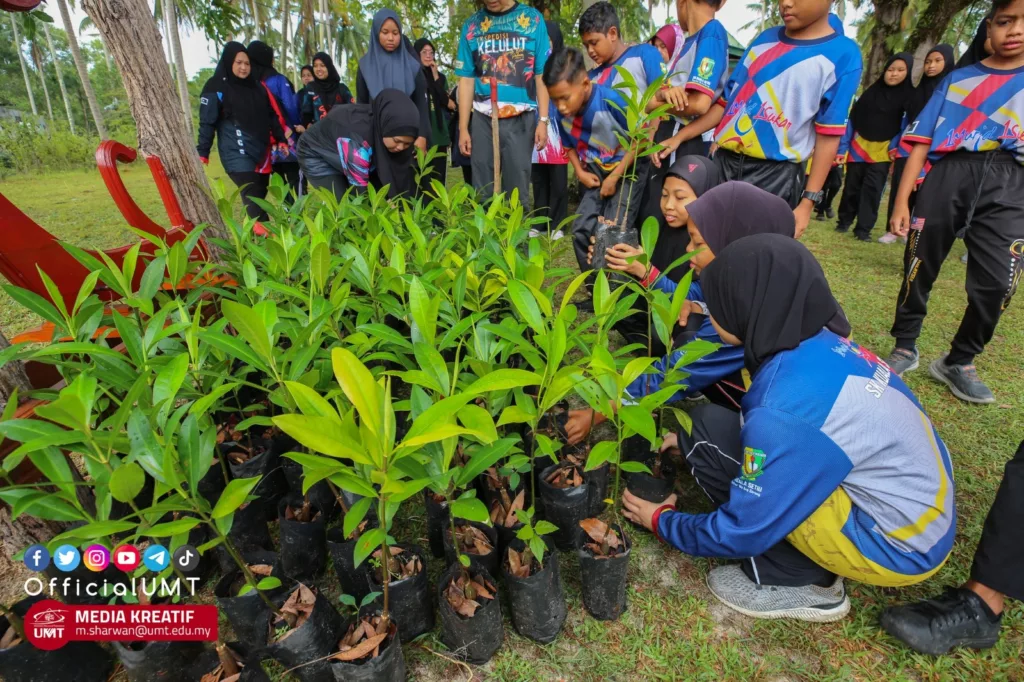
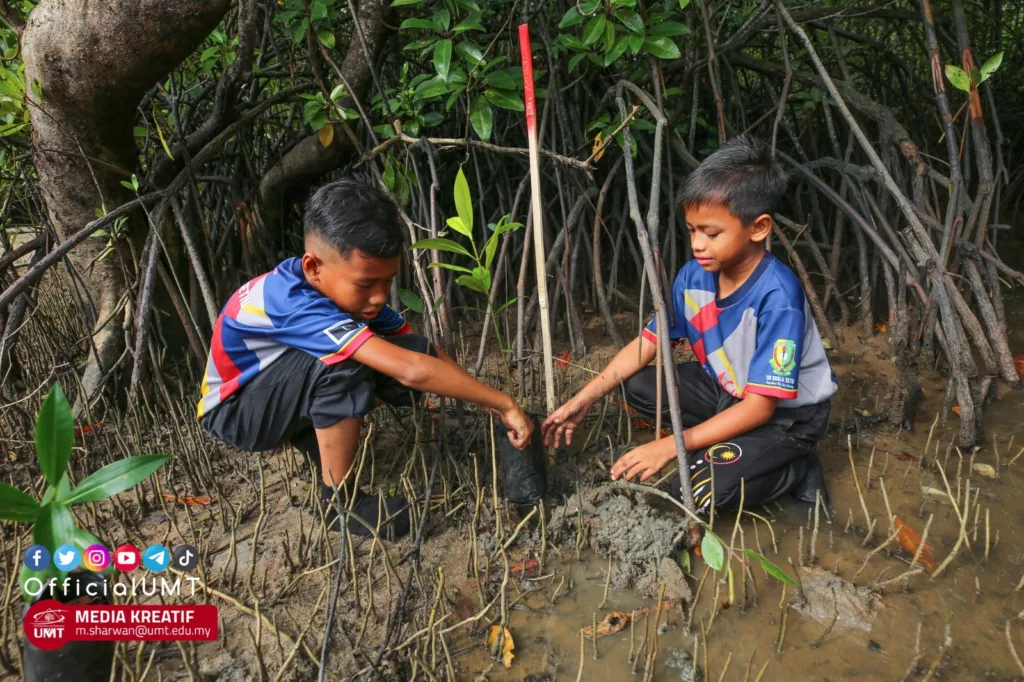
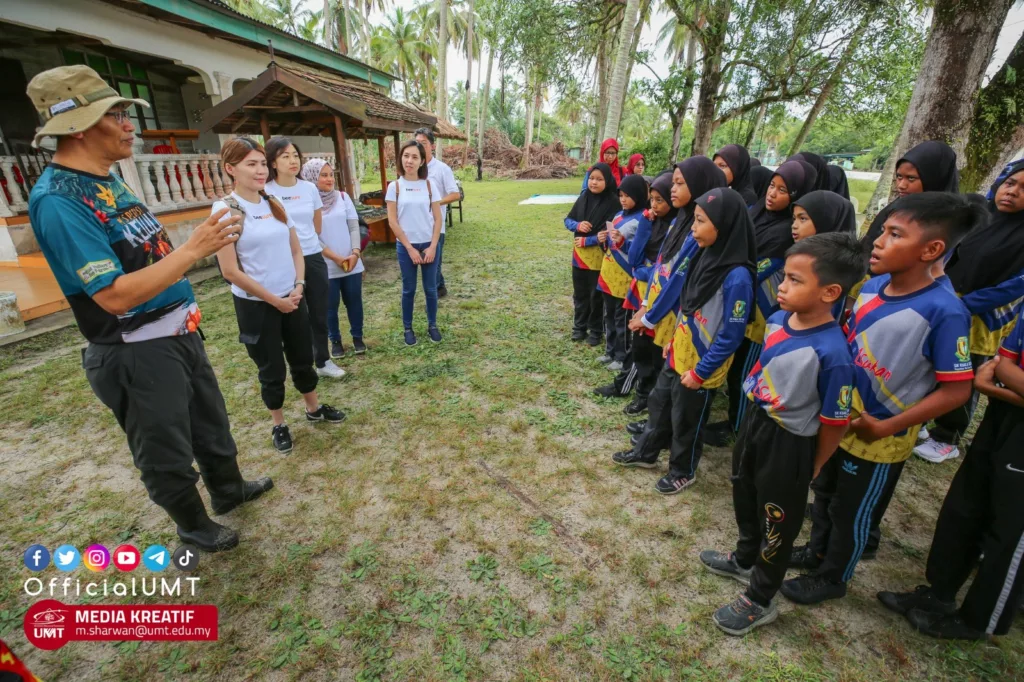
UMT maintains more than 50,000 marine specimens for researchers’ reference
Tuesday, 23/05/2023
Universiti Malaysia Terengganu (UMT) is an institution that is no stranger to studies related to the oceans. The fields of research cover various scopes, among them physical oceanography, fisheries, and oceans’ current, temperature, and organisms.
UMT’s South China Sea Reference & Repository Centre (RRC) located at the Institute of Oceanography and Environment (INOS) acts as a library that enables researchers to conduct their works without having to dive into the oceans themselves.
RRC, initially set up as a marine natural history museum in 2004, now focuses on the collection of various marine specimens available along Malaysian waters (South China Sea and Straits of Malacca).
INOS has frequently been a source of reference regarding issues involving the oceans and marine lives. The institute has established that RRC is to become the main repository for marine collections and source of reference for research and education in Malaysia.
To date more than 50,000 marine specimens are placed at RRC. In addition, there are 70 specimens classified as “type” specimens, which are specimens used to name new species in science. All the specimens are valued at an estimated RM7.5 million. Curators at RRC have classified specimen samples into several categories, including biology, geology, paleontology, and genomics.
The specimens at RRC are kept according to whether they are wet, dry, or genomic. UMT management emphasizes the quality of storage, so the process is carried out according to the standards from National Park Service, USA.
Most specimens at RRC have been contributed by UMT researchers. There are, however, some that have been provided by outside researchers.
RRC is recognized by the Malaysian government as the main repository centre for marine specimens. At the international level, RRC is endorsed by the Australian government as an exchange centre for biological specimens for Australian institutions.
In addition, RRC is also the main contributor to Malaysia Biodiversity Information System (MyBIS) data centre and the country’s Ocean Biodiversity Inform
